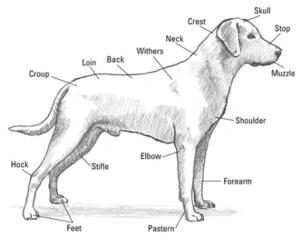Can dogs be bred to be as smart as humans?
If one were to roughly compare the extent to which Border Collies have had their intelligence improved, it equates to a dog with the intelligence of a three-year-old child, or about 40% more intelligent than an average dog—which is to say that an average Border Collie can be considered a genius of the dog world; this means they would equate to a human with an IQ of 140 or higher on average.” But to be clear, when a dog is too smart–they can outsmart YOU and training can be a challenge! Border Collies are one of the hardest to train.
PAYTON PEARSON, “ARTIFICIALLY SELECTING FOR INTELLIGENCE IN DOGS TO PRODUCE HUMAN-LEVEL IQ WITHIN 100 GENERATIONS” AT FIGSHARE (SEPTEMBER 24, 2022)
ANATOMY is a factor. Would a dog brain support a human-like neurological capability? It would require major restructuring of the brain in an animal that is a canid, not a primate. If we can’t do it with chimpanzees, why should we think we can do it with dogs?
Dogs are already smart, as animals go
All that said, the American Kennel Club advises that dogs are smarter than we think without any major changes anyway: “They can also understand more than 150 words and intentionally deceive other dogs and people to get treats, according to psychologist and leading canine researcher Stanley Coren, PhD, of the University of British Columbia.” (2009) Coren, who writes the Canine Corner column at Psychology Today, agrees with Pearson that Border Collies are the smartest dogs: “Border collies are number one; poodles are second, followed by German shepherds. Fourth on the list is golden retrievers; fifth, dobermans; sixth, Shetland sheepdogs; and finally, Labrador retrievers,” said Coren.”
Here’s an attempted ranking of dog breeds by intelligence and other traits.
Charles Fawole tells us at Pet Calculator (April 14, 2022), that there are three types of dog intelligence we can measure: Instinctive intelligence (for hunting, guarding, or herding, for example), which tends to be inherited based on the breed; adaptive intelligence, which is the dog’s individual ability to learn things on its own; and working/obedience intelligence, which is what a dog can do with instruction from humans. According to Fawole, the dog that takes the longest to learn commands is the Afghan hound.
Incidentally, according to Jean Marie Bauhaus at Hills Bros, a pet food company site, large dogs are smarter than small ones: The suggested explanation is that the small dogs often have oddly shaped heads, which may interfere with brain development: “Meanwhile, mesocephalic dogs — those with average-shaped heads, like Labrador retrievers — tend to lack such specialization, which, according to researchers, may give them more cognitive flexibility that makes them better at learning new tasks.” (June 12, 2019)
But comparisons with humans, as in “When comparing Border Collies to humans studies have shown that they show intelligence close to a 3-year-old child” are off base. The child is becoming a creature with reason and moral choice and the dog isn’t.
So, do you think your Labrador is smarter than a 1st grader??? You decide!
***********************************************************************************************************************
(Below: more facts for those with long attention spans! LOL)
“Artificial selection is a well-known phenomenon of selecting for certain physiological characteristics of various species of plants and animals, and it is something that human beings have been doing for thousands of years. A perfect example of this is the union and development of dogs under human stewardship since the beginning of the agricultural era of society. In that time, approximately 6,000 years [1], dogs have been artificially selected in such a way as to produce thousands of different breeds. From the stout Dachshund, a dog breed produced for the purpose of hunting den-dwelling animals, to the highly intelligent Border Collies who were bred to help sheep herders herd their flocks; the many different canine breeds have served humanity in a multitude of capacities for many generations. In this paper, using the concept of artificial selection,[1] it is determined with mathematical and statistical evidence how humans could artificially select for canine intelligence to such a degree as to produce canines with human levels of intelligence within a relatively short amount of time—600 years. “
PAYTON PEARSON, “ARTIFICIALLY SELECTING FOR INTELLIGENCE IN DOGS TO PRODUCE HUMAN-LEVEL IQ WITHIN 100 GENERATIONS” AT FIGSHARE (SEPTEMBER 24, 2022)





4 Comments